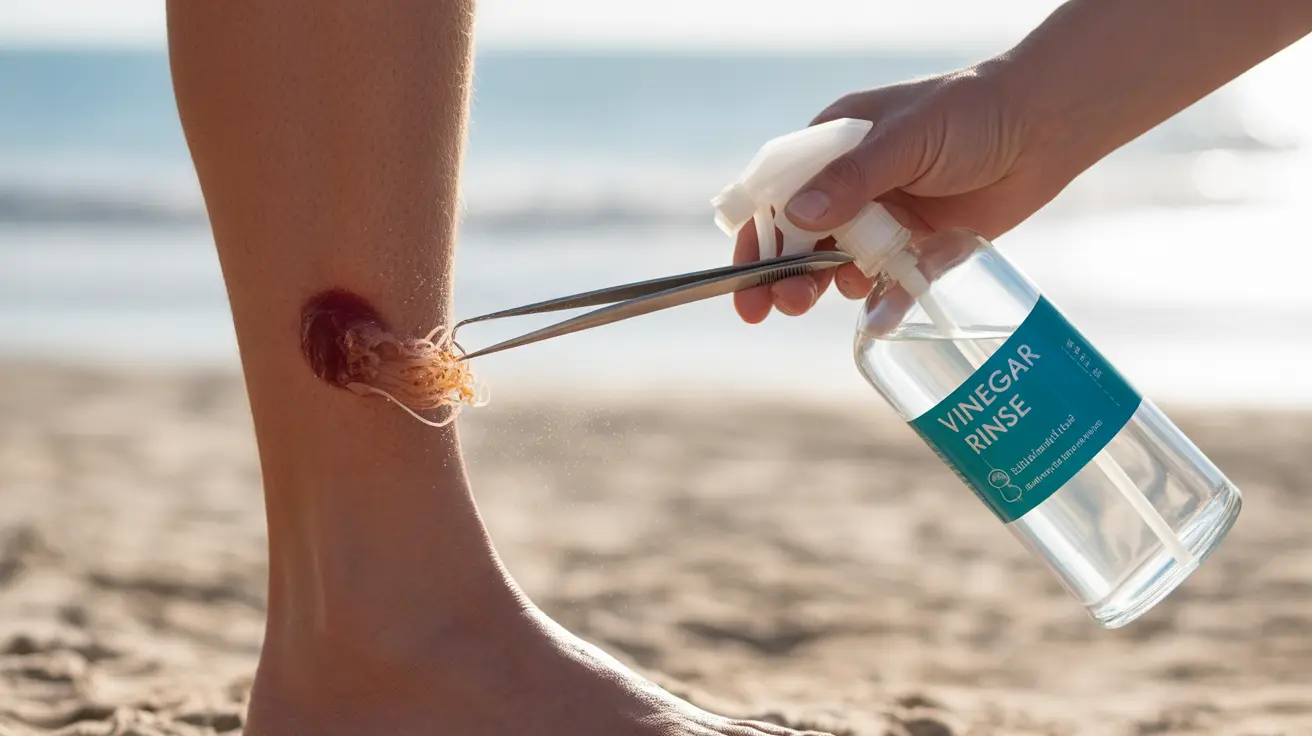When it comes to treating jellyfish stings, there are many widespread myths and misconceptions. One of the most persistent myths is that urinating on a jellyfish sting can help relieve pain and neutralize the venom. However, this popular belief is not only ineffective but could potentially make the situation worse.
Understanding the correct treatment for jellyfish stings is crucial for anyone who spends time near the ocean. This article will explain why urinating on a sting is harmful and outline the proper first aid steps you should take instead.
Why Urinating on a Jellyfish Sting Is Harmful
The idea that urine helps treat jellyfish stings likely originated from the belief that its acidic nature could neutralize the venom. However, this is scientifically incorrect for several reasons:
- Urine's pH varies significantly and can actually trigger more stinger cells to fire
- Human urine is mostly water, which can activate remaining nematocysts
- The temperature and chemical composition of urine may increase pain and inflammation
- Using urine wastes valuable time that could be spent on proper treatment
Proper First Aid for Jellyfish Stings
Instead of reaching for unreliable folk remedies, follow these evidence-based steps for treating a jellyfish sting:
Initial Response
- Remove the person from the water immediately
- Carefully remove any visible tentacles using tweezers
- Rinse the affected area with seawater (not fresh water)
- Apply vinegar liberally to the sting site
The Vinegar Treatment
Vinegar is a proven first-line treatment for jellyfish stings because:
- It helps deactivate unfired nematocysts
- The acetic acid prevents further venom release
- It's safe to use and readily available in many beach first aid kits
- Multiple studies support its effectiveness
When to Seek Medical Attention
While many jellyfish stings can be treated at home, certain situations require immediate medical care:
- Severe allergic reactions or difficulty breathing
- Stings covering large areas of the body
- Signs of severe pain or muscle cramping
- Stings to sensitive areas like eyes or mouth
- Stings from highly dangerous species like box jellyfish
What to Avoid During Treatment
Several common mistakes can worsen a jellyfish sting:
- Rinsing with fresh water
- Rubbing the affected area
- Applying ice directly to the skin
- Using alcohol or ammonia
- Applying pressure bandages unless specifically instructed by medical professionals
Frequently Asked Questions
Why is peeing on a jellyfish sting not recommended and can it make the sting worse?
Peeing on a jellyfish sting is not recommended because urine can actually cause remaining nematocysts (stinging cells) to fire, releasing more venom. Additionally, urine's varying pH levels and composition can increase pain and inflammation rather than provide relief.
What is the correct first aid treatment for a jellyfish sting?
The correct first aid treatment involves removing the person from water, carefully removing visible tentacles with tweezers, rinsing the area with seawater, and applying vinegar liberally to the affected area. Avoid rubbing the sting or using fresh water.
How does vinegar help when treating jellyfish stings?
Vinegar helps by deactivating unfired nematocysts and preventing further venom release. Its acetic acid content makes it an effective and scientifically proven first-line treatment for most jellyfish stings.
When should someone seek medical care after a jellyfish sting?
Seek immediate medical attention if there are signs of severe allergic reaction, difficulty breathing, extensive stings, severe pain, muscle cramping, or stings to sensitive areas like the eyes or mouth.
What should be avoided when treating a jellyfish sting to prevent increased pain or venom release?
Avoid using fresh water, rubbing the affected area, applying ice directly to the skin, using alcohol or ammonia, and applying pressure bandages unless directed by medical professionals. These actions can cause additional nematocysts to fire and increase pain.




